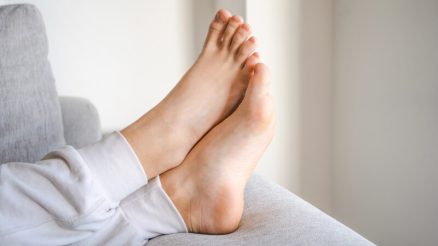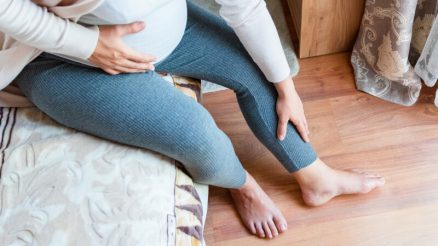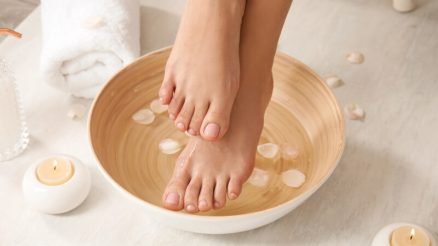Hot weather brings sunshine, outdoor activities, and often, a less-than-pleasant side effect: sweaty feet. While sweating is a natural bodily function designed to cool you down, excessive foot perspiration can lead to discomfort, odor, fungal infections like athlete’s foot, and even blisters. But don’t despair! With a few smart strategies, you can keep your feet feeling fresh and dry, even when the mercury rises.
Understanding Why Feet Sweat
Before diving into solutions, it’s helpful to understand the “why.” Your feet are home to a disproportionately high number of sweat glands – an estimated 250,000 per foot! These eccrine glands are constantly active, producing sweat to regulate body temperature. In hot weather, or during physical activity, this production increases. When sweat gets trapped in shoes and socks, it creates a warm, moist environment that’s a breeding ground for bacteria, leading to the familiar unpleasant odor.
Essential Strategies for Dry Feet
Here’s a detailed guide to keeping your feet cool and dry:
1. Choose the Right Footwear
Your shoe choice is paramount in preventing sweaty feet.
- Breathable Materials: Opt for shoes made from natural, breathable materials like canvas, leather (unlined or perforated), or mesh. These materials allow air to circulate, helping sweat evaporate. Avoid synthetic materials like plastic or rubber, which trap heat and moisture.
- Open-Toe Styles: Whenever possible, wear sandals, flip-flops, or other open-toed shoes. This allows maximum air exposure to your feet, significantly reducing sweat buildup.
- Rotate Your Shoes: Don’t wear the same pair of shoes every day. Giving your shoes at least 24 hours to air out and dry completely between wears can make a huge difference. Consider investing in a few pairs that you can rotate.
- Proper Fit: Ensure your shoes fit well. Too-tight shoes can restrict airflow and create friction, leading to more sweat and potential blisters.
2. Select the Best Socks
Socks act as a barrier between your foot and your shoe, and their material is crucial.
- Moisture-Wicking Fabrics: Ditch cotton socks in hot weather. While cotton absorbs moisture, it holds onto it, keeping your feet damp. Instead, choose socks made from moisture-wicking synthetic blends (like polyester, nylon, or spandex) or natural fibers like bamboo or merino wool. These materials draw sweat away from your skin, allowing it to evaporate.
- Thin Socks: Opt for thin, lightweight socks rather than thick ones, even if they are moisture-wicking. Less material means more breathability.
- Change Socks Frequently: If you’re prone to very sweaty feet, carry an extra pair of socks and change them midday, especially if you’ve been active.
- Go Sockless (With Caution): While going sockless can increase breathability, it also means your feet are directly exposed to the shoe’s interior, which can become damp and harbor bacteria. If you go sockless, ensure your shoes are made of breathable materials and consider using foot powder.
3. Implement Good Foot Hygiene
Cleanliness is next to dryness when it comes to foot health.
- Wash Your Feet Daily (and Thoroughly): Wash your feet with antibacterial soap and water every day, paying special attention to between your toes. This helps remove sweat, dirt, and bacteria.
- Dry Your Feet Completely: This is perhaps the most critical step. After washing, ensure your feet are completely dry, especially between the toes, using a soft towel. Residual moisture is an invitation for fungal growth.
- Use Foot Powder or Antiperspirant:
- Foot Powder: Absorbent powders containing ingredients like cornstarch, talc, or baking soda can absorb excess moisture. Apply it to your feet and inside your shoes.
- Antiperspirant: Yes, antiperspirants aren’t just for underarms! Look for foot-specific antiperspirants or use a regular antiperspirant on your feet. Apply it before bed, as the active ingredients work best overnight when sweat glands are less active.
- Consider Foot Soaks: Occasional foot soaks with ingredients like black tea (tannins help constrict sweat glands) or Epsom salts can help reduce perspiration and fight odor.
4. Lifestyle Adjustments and Advanced Solutions
- Stay Hydrated: While seemingly counterintuitive, adequate hydration helps your body regulate temperature more efficiently, potentially reducing excessive localized sweating.
- Manage Stress: Stress and anxiety can trigger the “fight or flight” response, which includes increased sweating. Finding ways to manage stress can indirectly help with foot perspiration.
- Dietary Considerations: Some foods and drinks (like caffeine, spicy foods, or alcohol) can trigger sweating in some individuals. Observe if certain items exacerbate your foot sweat.
- Medical Consultation (Hyperhidrosis): If you experience persistently excessive and uncontrollable foot sweating (a condition called plantar hyperhidrosis), despite trying all home remedies, consult a doctor or dermatologist. They might recommend stronger antiperspirants, iontophoresis (a procedure using water and mild electrical currents), or other treatments.
Quick Tips for On-the-Go Relief
- Keep a small bottle of foot powder or antiperspirant in your bag.
- Carry extra socks, especially during long days or travel.
- Kick off your shoes whenever you can to air out your feet.
- Use shoe deodorizers or cedar shoe trees to absorb moisture and odor from shoes overnight.
By adopting these habits and making conscious choices about your footwear and foot care, you can significantly reduce sweaty feet and enjoy the hot weather comfortably and confidently. Say goodbye to sticky, smelly feet and hello to fresh, happy strides!








